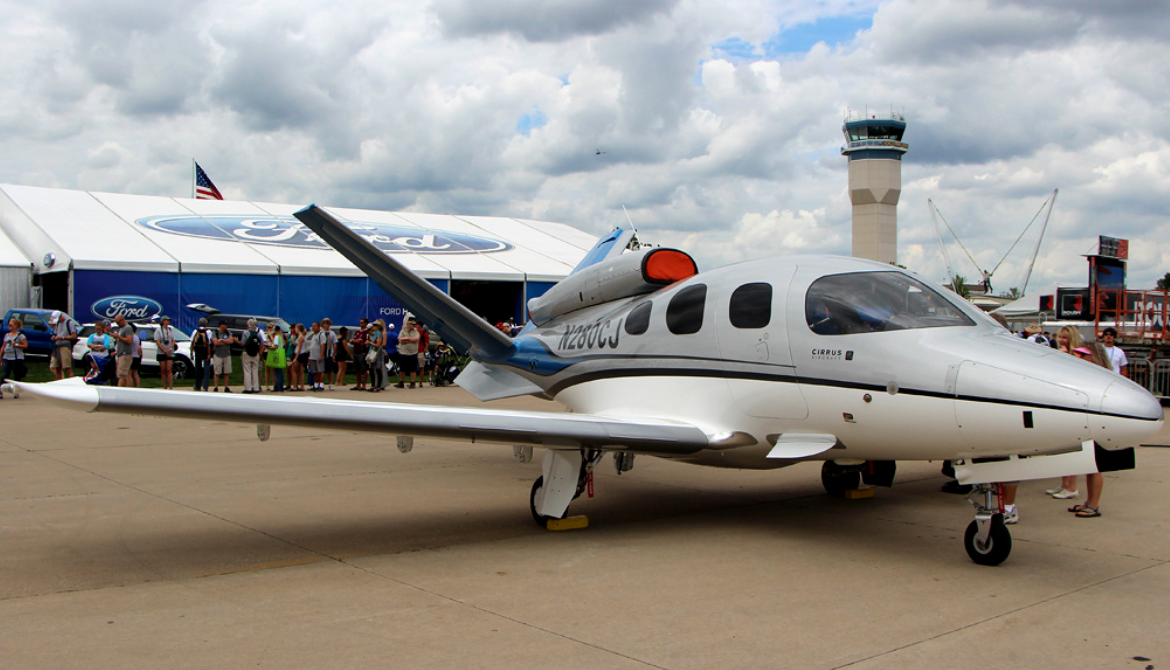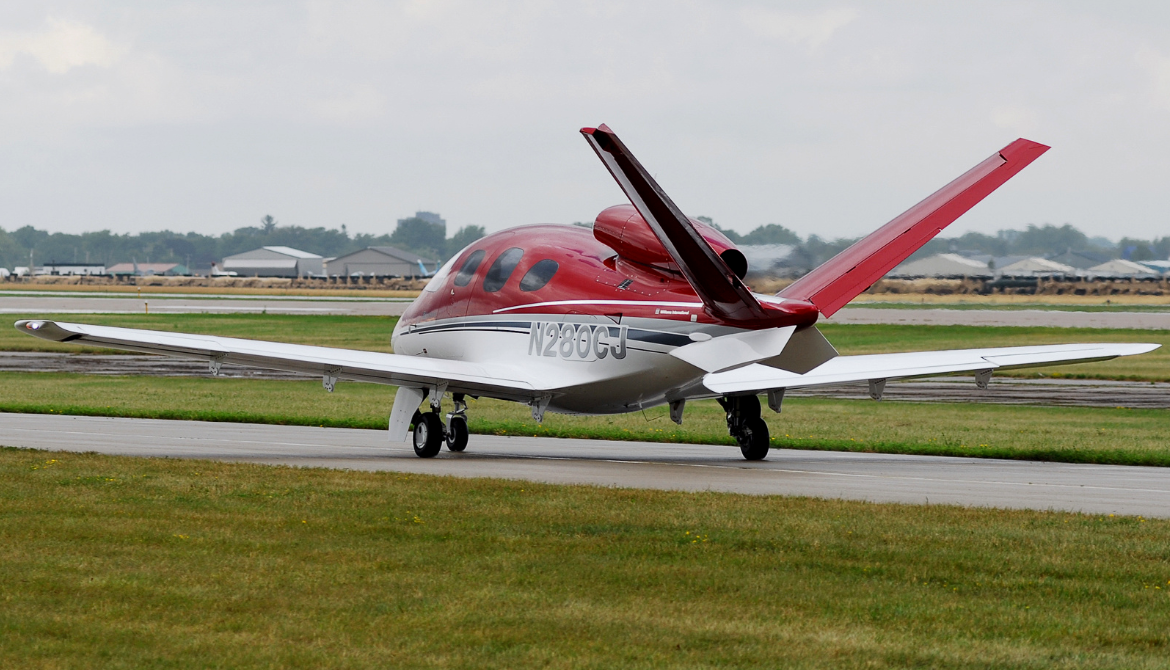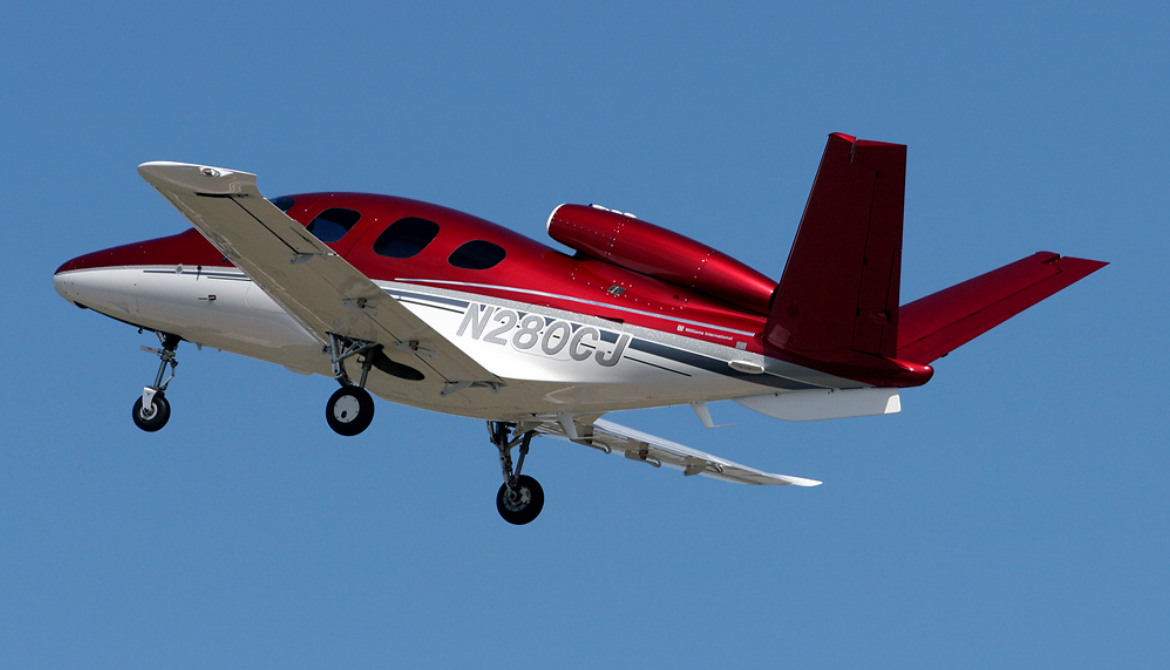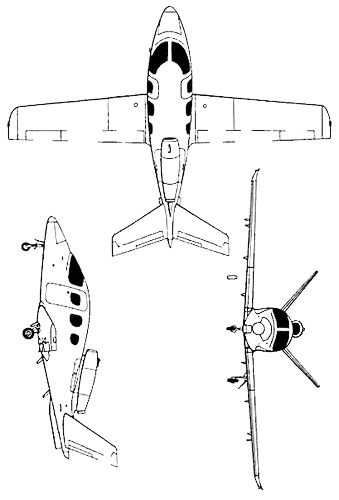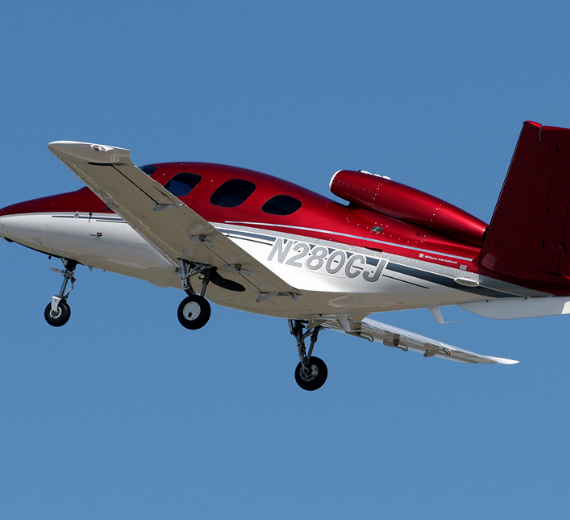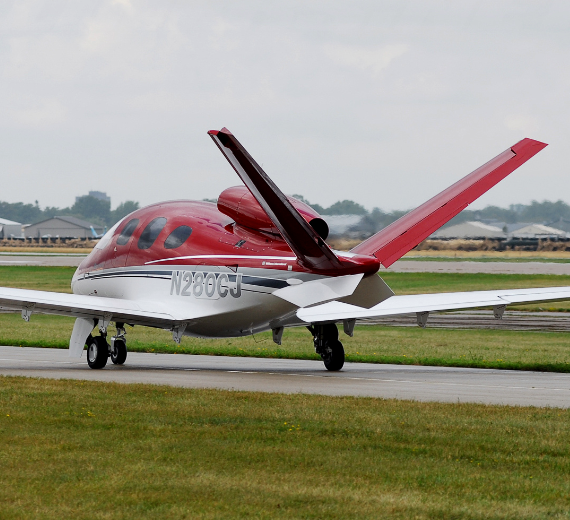Cirrus Vision SF50, also known as the Vision Jet
Role Very light jet
National origin United States
Manufacturer Cirrus Aircraft
First flight First prototype: 3 July 2008
Conforming prototype: 24 March 2014
First production: 5 May 2016
Status In production
Produced December 2016–present
Number built 418 delivered (as of December 2022)
.
History Cirrus Design Corporation
Cirrus Vision SF50, also known as the Vision Jet

The Cirrus Vision SF50, also known as the Vision Jet, is a single-engine very light jet designed and produced by Cirrus Aircraft of Duluth, Minnesota, United States.
After receiving deposits starting in 2006, Cirrus unveiled an aircraft mock-up on 28 June 2007 and a prototype on 26 June 2008. It made its maiden flight on 3 July 2008.
Powered by a Williams FJ33 turbofan, the all-carbon fiber, low-wing, seven-seat Vision SF50 is pressurized, cruises at 300 kn (560 km/h) and has a range of over 1,200 nmi (2,200 km). For emergency uses, it has both a whole-airframe ballistic parachute and autoland system.
Reviews have compared its performance to high-performance single-turboprop aircraft. In 2018, the Vision Jet was awarded the Collier Trophy for the "greatest achievement in aeronautics or astronautics in America" during the preceding year, being the first certified single-engine civilian jet..
Developent

Naming
From June 2006 to July 2008, the design was developed under the project name "The Jet", or "The-Jet by Cirrus". On 9 July 2008, Cirrus announced the marketing name of "Vision SJ50", with "V" for the V-tail and "SJ" for "single-jet". By March 2009, the aircraft was re-designated as the "Vision SF50", as it uses a single-fanjet engine. By April 2016, Cirrus was calling it the "Vision Jet" and on 28 October 2016, it was certified as the "Model SF50".
Early development
The company began initial development on the jet in 2003 at an offsite Duluth, Minnesota location it called the "Moose Works”, a parody on Lockheed Martin's Advanced Development Programs dubbed the "Skunk Works".
The jet was announced by Cirrus in June 2006 at the Cirrus Owners and Pilots Association meeting. At the October 2006 NBAA Convention, Cirrus detailed its single jet program to solicit US$100,000 deposits from potential customers, targeting a price below $1 million and a 2010 certification, for a 300 kn (560 km/h) cruise speed around 25,000 ft (7,600 m) with a Williams FJ33 and a whole-airplane parachute recovery system. Cirrus described it as the "slowest, lowest, and cheapest jet available."

In early 2007 the company gave deposit holders a drawing of the aircraft in the form of a jigsaw puzzle, one piece at a time. On 27 June 2007, the puzzle was completed and the aircraft mock-up was unveiled the following day. Starting at this time it became described as a "personal jet".
In September the L-3 SmartDeck avionics package was selected for the jet development. On 27 December, Cirrus Design leased a 189,000 sq ft (17,600 m2) former Northwest Airlines hangar at Duluth International Airport in which to build the design.
By 22 May 2008, the company had 400 refundable deposits of US$100,000. The prototype was first shown publicly at the annual Cirrus Owners and Pilots Association Cirrus Migration on 26 June 2008.
0
KmCeiling
0
KmMax Range
0
Km/hAircraft Speed
0
Max Crew
Photo Gallery
Cirrus Design Corporation
Cirrus Vision SF50, also known as the Vision Jet


Cirrus Design Corporation
Cirrus Vision SF50, also known as the Vision Jet
General Info
-
-
- Crew: one
- Capacity: six passengers
- Length: 30 ft 11 in (9.42 m)
- Wingspan: 38 ft 8 in (11.79 m)
- Height: 10 ft 11 in (3.32 m)
- Empty weight: 3,550 lb (1,610 kg)
- Gross weight: 6,000 lb (2,722 kg)
-
Powerplant
-
-
- Fuel capacity: 2,000 pounds (910 kg)
- Cabin width × height: 5.1×4.1 ft (1.56×1.24 m)
- Max payload: 1,328 lb (602 kg)
- Powerplant: 1 × Williams FJ33-5A turbofan, 1,846 lbf (8.21 kN) thrust
-
Performance
- Maximum speed: (358 mph, 576 km/h) maximum cruise speed
- Cruise speed: (351 mph, 565 km/h)
- Stall speed: (124 km/h) with flaps
- Range: 600 nmi (690 mi, 1,100 km) with 1,200 lb (544 kg) payload at max cruise to 1,200 nmi (2,222 km; 1,381 mi) with 200 lb (91 kg) payload at economical cruise
- Service ceiling: (9,400 m)
.
Links to Youtube & Others
On January 8, 2019, the improved G2 was announced, adding RVSM allowing a ceiling of 31,000 ft (9,400 m) and improving range to over 1,200 nmi (2,200 km), or allowing 150 lb (68 kg) more payload over 800 nmi (1,500 km).
Cirrus SF50 Vision
All current G2+ models and later G2 models include the Cirrus Safe Return emergency autoland system by Garmin
Youtube Link
On April 16, 2019, Cirrus issued a mandatory Service Bulletin to replace the angle of attack (AOA) vane within five flight hours after three reported incidents where stall warnings and stick shakers were activated by automated systems in normal flight



